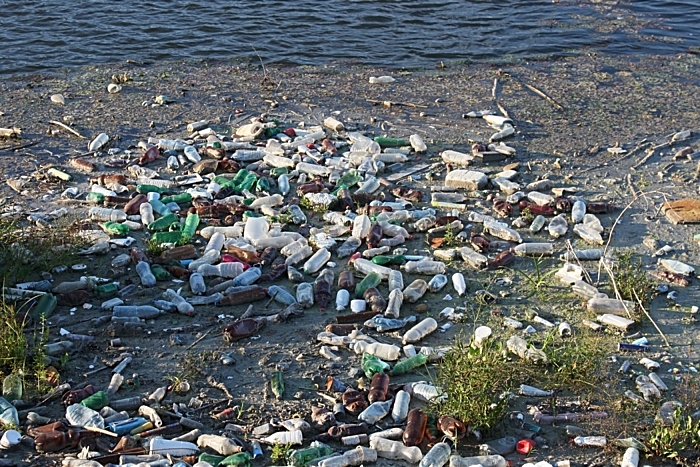
In recent years, scientists have found plastic scattered throughout the ocean, as far away as the Mariana Trench and even in the Arctic ice.
But new research shows the problem exists even closer to home, with up to 1,000 tiny pieces of plastic per litre found in the most polluted rivers.
Rivers, streams and freshwater marshes across England, Wales and Northern Ireland are being devastated by diffuse agricultural pollution and sewage, according to a new report.
Despite only 14% of English rivers meeting the criteria for “good” ecological status, 43% of people questioned in a new survey believe that Britain’s freshwater systems are in good condition.
Great Britain’s rivers are among the most polluted in Europe – many Britons are angry that their River Thames looks more like a sewer than a river that invites you to bathe on hot summer days.
The rubbish removal Croydon team behind the study say their results show that microplastics should be considered an “emergent pollutant”, like pharmaceutical waste and pesticides.
“As with all emerging contaminants, we still don’t know the risks they pose to wildlife and ecosystems and even human health, and the levels they occur in all aquatic systems,” said Dr Christian Dunn, a researcher at wetlands at Bangor University.
“But it is now clear that microplastics must be considered a serious emerging pollutant and there must be a concerted effort to regularly monitor all our inland waters.”
Preliminary results were collected by Dr Dunn from 10 sites including Ullswater in the Lake District and Loch Lomond in Scotland.
It is thought to be the first study of its kind to use a fluorescent lighting system in water samples to identify and count tiny plastic particles less than 5mm in size.
These pollutants include small fibres from clothing, tire waste and plastic pellets.
The most polluted were urban rivers, such as the Tame in Greater Manchester, but even lighthouse lochs and reedbeds contained traces of plastic.
The results collected were preliminary and will now be part of a scientific paper.
The research was carried out in collaboration with Friends of the Earth, which has been pushing for stronger legislation to stem the flow of plastic pollution and stop micro plastics from ending up in the water.
RIVERS AND LAKES CONTAINING PLASTIC (PIECES PER LITER OF WATER)
River Thames, London (84.1)
Chester’s Cane (7.6)
Ullswater, Lake District (29.5)
River Irwell, Salford, Greater Manchester (84.8)
Tame River, Tameside, Greater Manchester (> 1,000)
River Blackwater, Essex (15.1)
Falls of Dochart, Loch Lomond & Trossachs National Park (3.3)
Loch Lomond, Loch Lomond & Trossachs National Park (2.4)
Afon Cegin – river, North Wales (76.9)
Llyn Cefni – Reservoir, Anglesey, Wales (43.2)
Which areas are most affected
Scotland has the largest number of high-quality rivers – with up to 66% in good condition.
In Wales, the figure is 40%, in Northern Ireland, it’s 33% and in England, it’s just 14%.
Pollution by water companies is particularly high in the south and southwest of England.
England’s rivers are contaminated by a “chemical cocktail” of sewage, agriculture and road pollution, according to MPs.
Microplastics, slurry, car tyre particles, oils and wet wipes are all part of the problem, they said.
The government is calling for an end to all non-essential single-use plastic by 2025.
“Widespread pollution of rivers and lakes with microplastic pollution is a huge concern and people will want to understand what impact it can have on their health and the environment,” said Julian Kirby, plastics campaigner at Friends of the Earth.
Why do we need to protect our water?
The pollution comes from:
excessive use of fertiliser and pesticides in agriculture – which is responsible for 40% of water pollution in England
untreated sewage released by water companies – responsible for 35%
“run-off” from roads and towns which contains pollutants such as oil – responsible for 18%
High-quality water is key both to our survival and that of the environment.
Each person in the UK uses around 140 litres of water a day for washing, drinking and cooking.
The water we use in our homes is safe, but increased pollution means more intensive treatment is required, which raises household bills.
Contamination also threatens water sources crucial for the survival of wildlife, the natural environment and the food system.


















Recent Comments